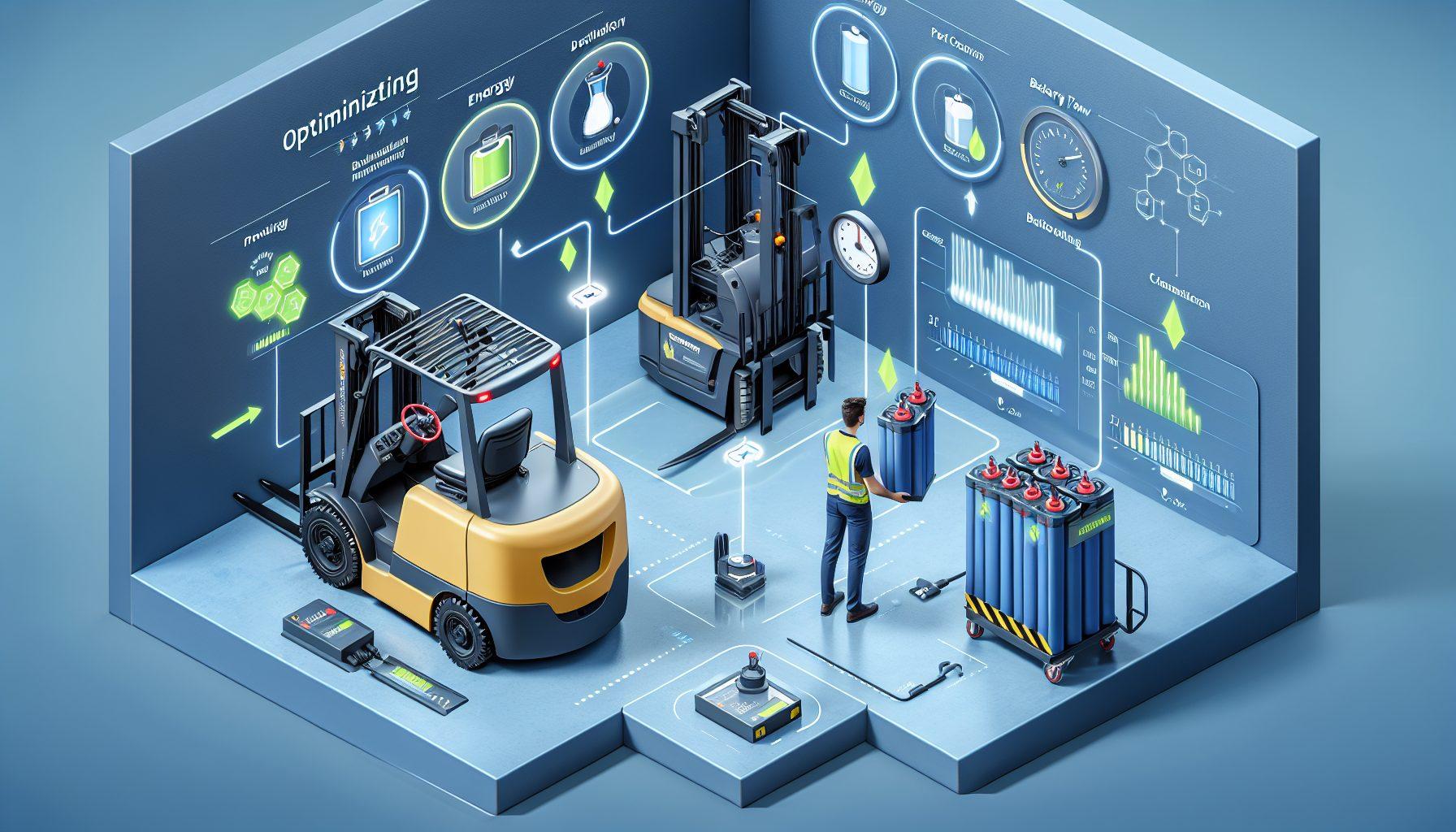Charging a battery seems simple—plug it in, wait, unplug, repeat. But when you’re running a full warehouse fleet, every cycle matters. Every charge, every discharge, every missed opportunity to top off—it adds up. And done wrong, it shortens battery life, increases downtime, and drives up your costs faster than you think.
Optimizing forklift battery charging isn’t about buying fancier gear. It’s about charging with intent. Smarter habits, better timing, tighter control. That’s where the real savings—and uptime—come from.
Know What a Cycle Actually Is
A charge cycle isn’t just “plug it in.” It’s the process of discharging the battery through use, then recharging it. One full discharge and one full recharge = one cycle. And those cycles are limited. Use them well, and your battery lasts. Use them carelessly, and you’re replacing it sooner than you planned.
Use Smart Chargers—Let the Tech Handle the Details
Smart chargers don’t just pump juice—they monitor voltage, temp, and charge curves. They shut off when they should. They taper when it’s needed. That protects the battery and delivers the right charge, every time.
If you’re still using outdated chargers with no feedback loop, you’re playing roulette with battery life. Upgrade. It’s not a luxury—it’s a cost control tool.
Stop Waiting for Empty—Use Opportunity Charging
Waiting for a full drain before charging used to be the norm. Not anymore. With opportunity charging, you plug in during breaks, lunch, or any short downtime. It keeps batteries topped up and avoids deep discharge cycles—the ones that wear your battery down faster.
This approach isn’t about convenience. It’s about lifespan. Frequent top-offs extend the usable life of a battery. That’s fewer replacements, fewer surprise failures mid-shift.
Fast Charging Can Be Smart—If You Respect the Rules
Fast charging isn’t bad—but misuse is. If you’re slamming high amps into a battery without proper monitoring or temperature compensation, you’re damaging cells even as you save time.
Use fast chargers with built-in safeguards. Track heat. Watch runtime. Plan usage so fast charging is a tool—not a panic button.
Don’t Let Heat Kill Your Investment
Batteries hate heat. It speeds up degradation and shortens life. Keep the charging area cool and ventilated. Avoid stacking batteries in hot corners. And if your system allows, use temperature-compensated charging to adjust output based on ambient conditions.
Cold matters too—but heat is the silent killer in most warehouses.
Rotate Batteries—Don’t Burn Out the Favorites
Some batteries get all the action. Others sit on the rack too long. That imbalance leads to early failure and uneven performance. Rotate. Build a first-in, first-out system. Let batteries cool before reuse. Equal use = equal wear = better fleet health overall.
Inspect. Clean. Repeat.
Bad connections kill charging efficiency. Corrosion on terminals. Frayed cables. Poor contact surfaces. Clean them. Inspect regularly. Make it part of the shift checklist.
A clean battery charges faster, holds better, and fails less often. It’s that simple.
Battery management isn’t a sideline task. It’s core to uptime. Every charging decision affects cost, performance, and lifespan. So get intentional. Use smart tools. Train your team. Build a plan.
Because when your battery routine is dialed in, your forklifts are always ready. No scrambling, no downtime, no surprises—just power, when and where you need it.

